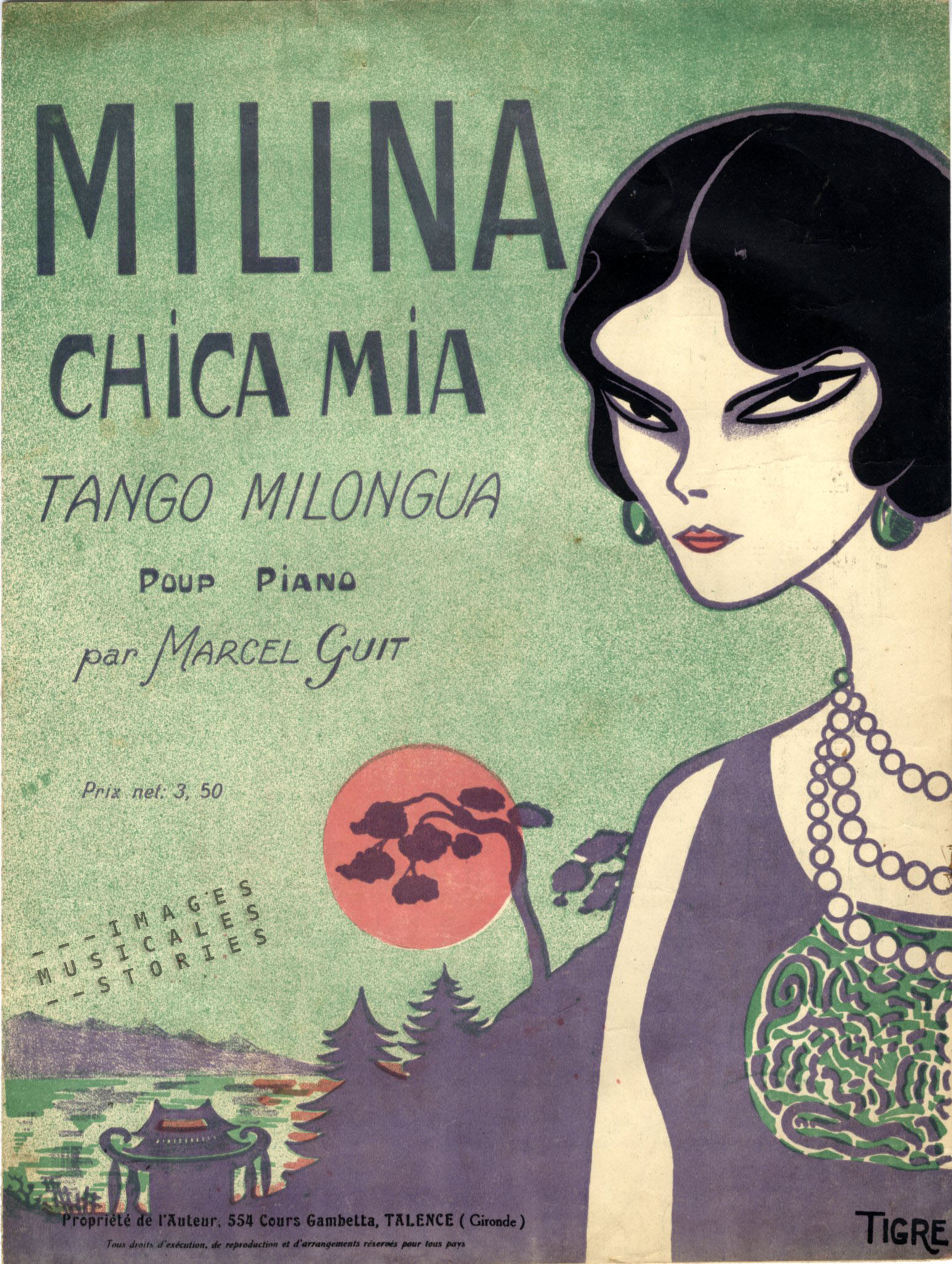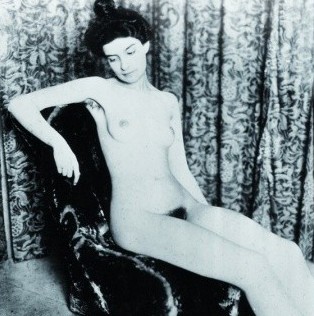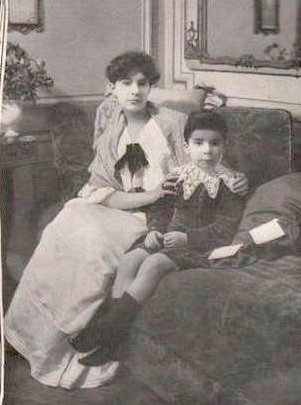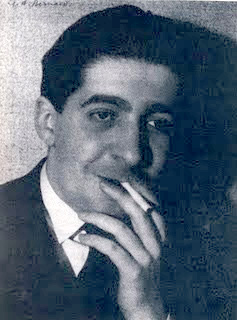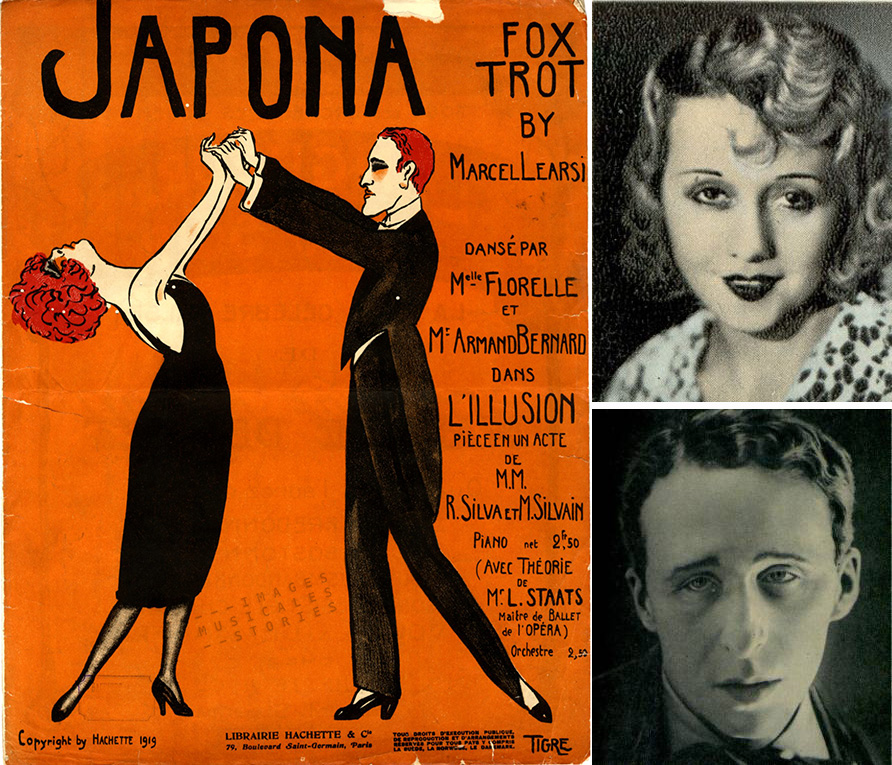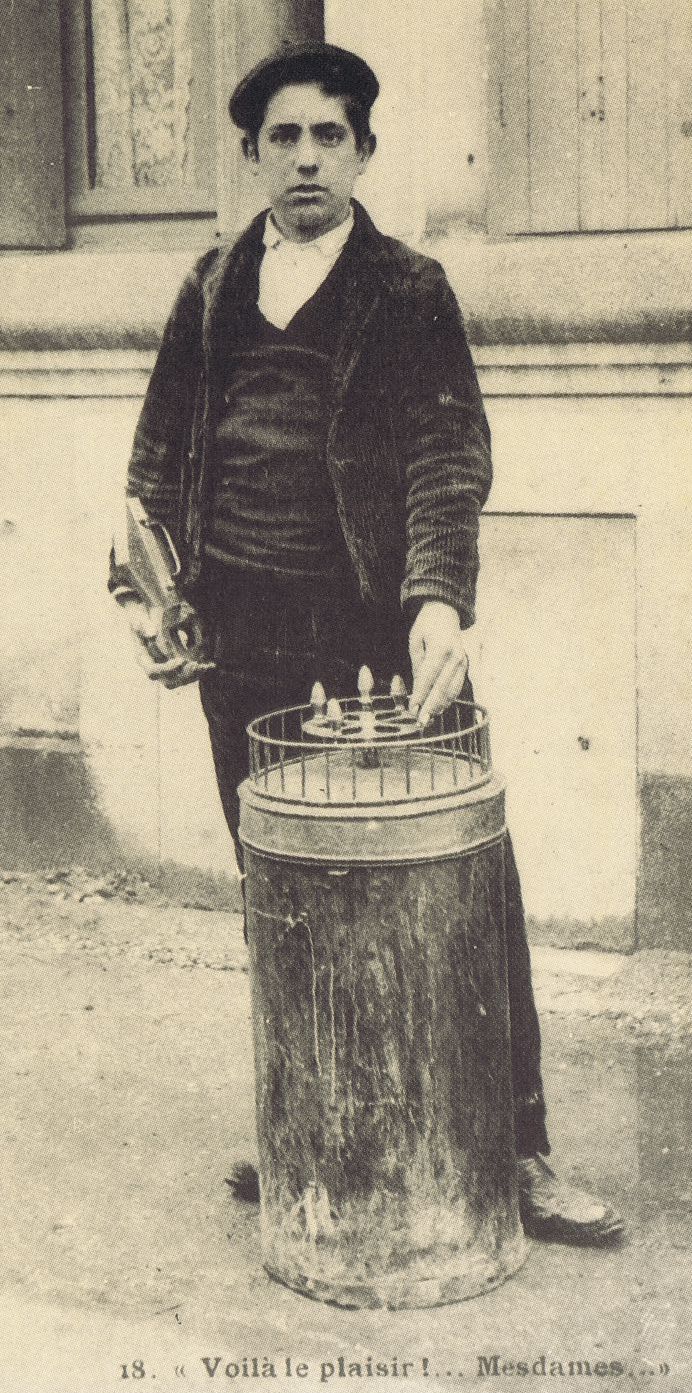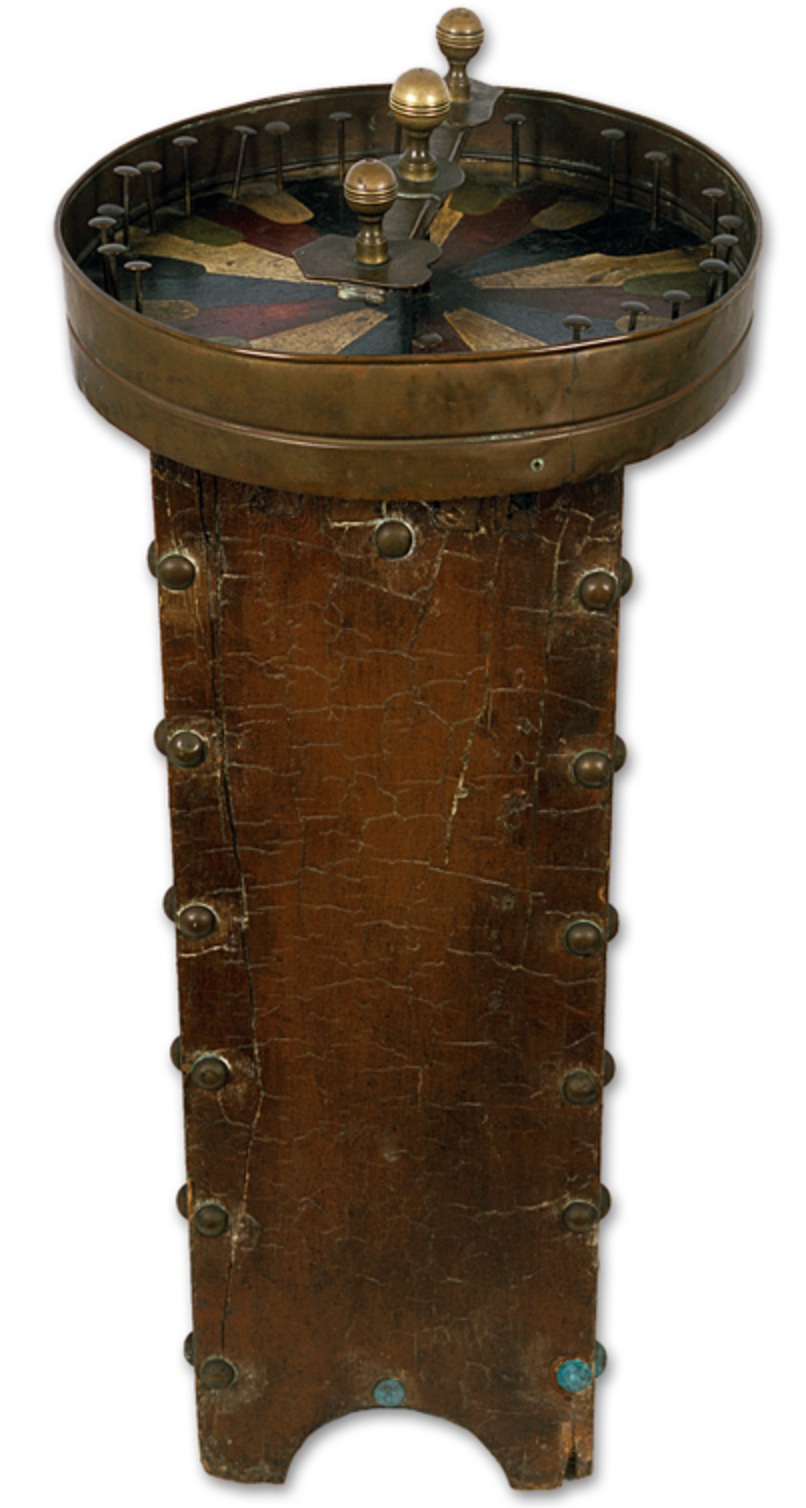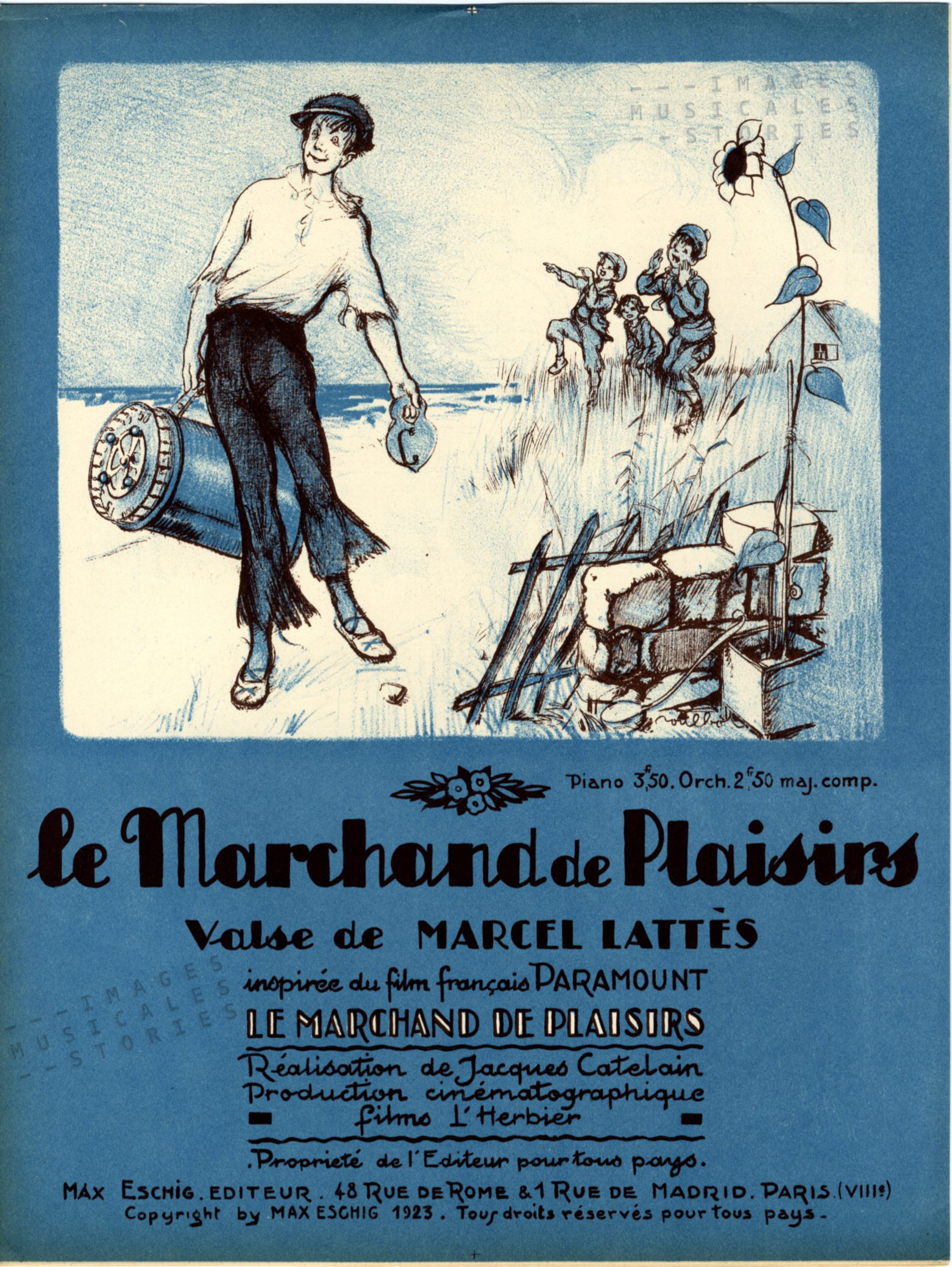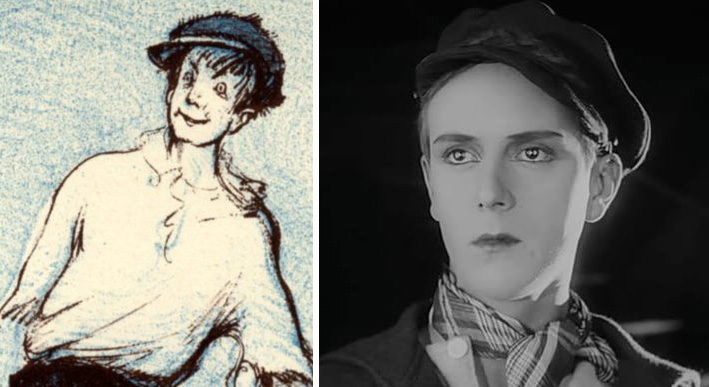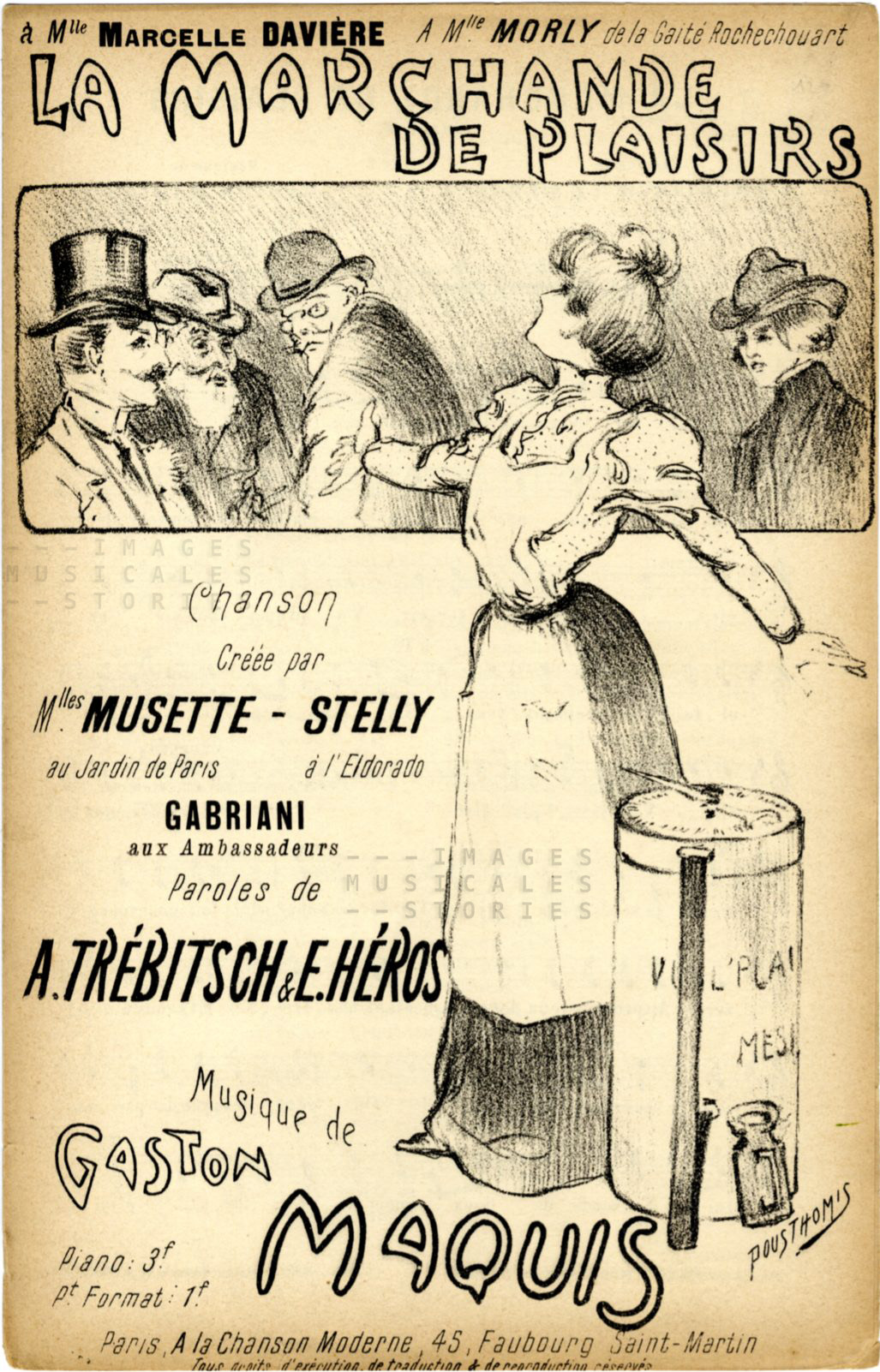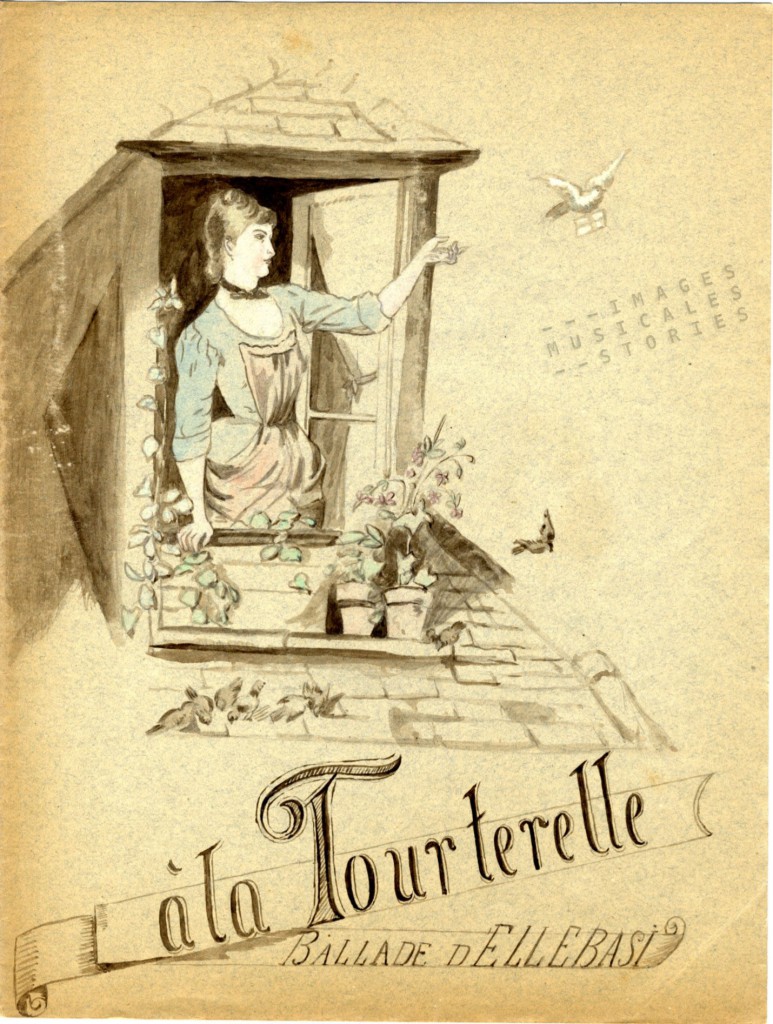
Some years ago in Paris we found a small bundle of handmade sheet music. Although the illustrations and music seemed rather naive and overly romantic we couldn’t resist buying it. Sometimes people craftily copied expensive printed sheet music, but in this case they were handwritten by the composer herself. She signed as ‘Ellebasi‘, clearly the reverse of Isabelle.
A bit of sleuthing on our part turned up her real name: Isabelle-Marie-Henriette Mellerio who became Isabelle Charpentier after her marriage to Lucien Charpentier, a not so gifted composer. Composers often dedicate their work to family or friends and so did Ellebassi. This enabled us to reconstruct her family story, which is rather interesting. We’ll even add a bit of scandal at the end.
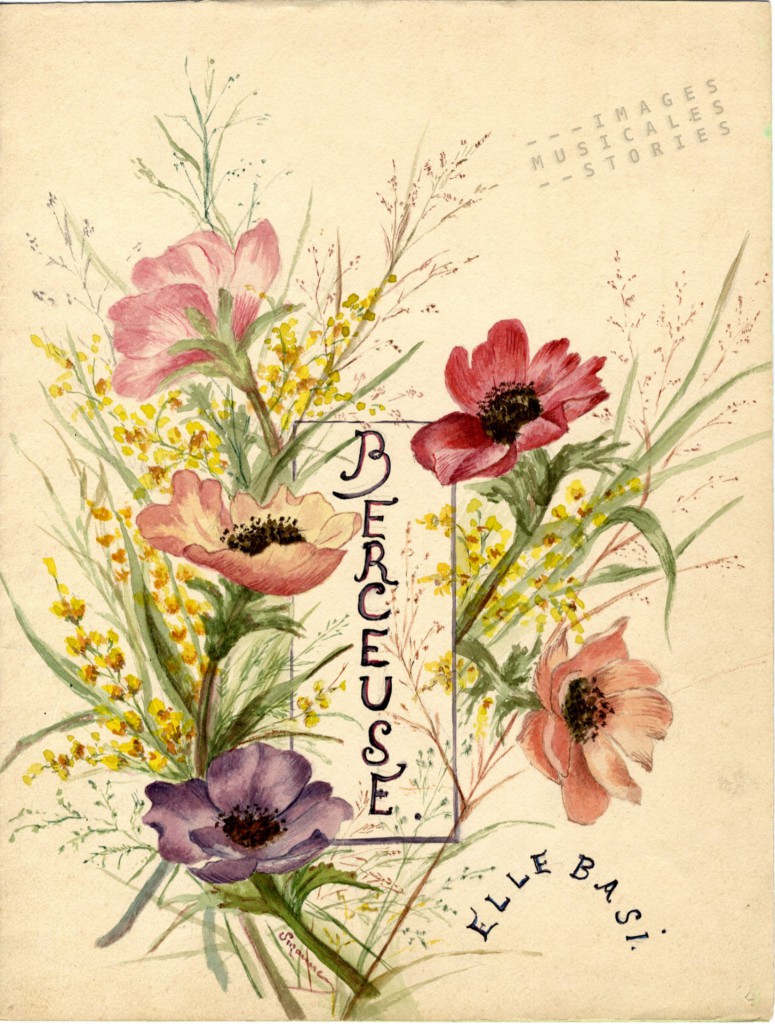
Ellebasi belonged to the famous jeweller family Mellerio dits Meller with roots in Italy. Being jewellers to kings and queens the family earned a large fortune. Isabelle Mellerio, born in 1866, was the youngest of seven children. Her family lived above their boutique in Paris. She was only 16 years old when her father Jean-Antoine, also a jeweller, passed away.
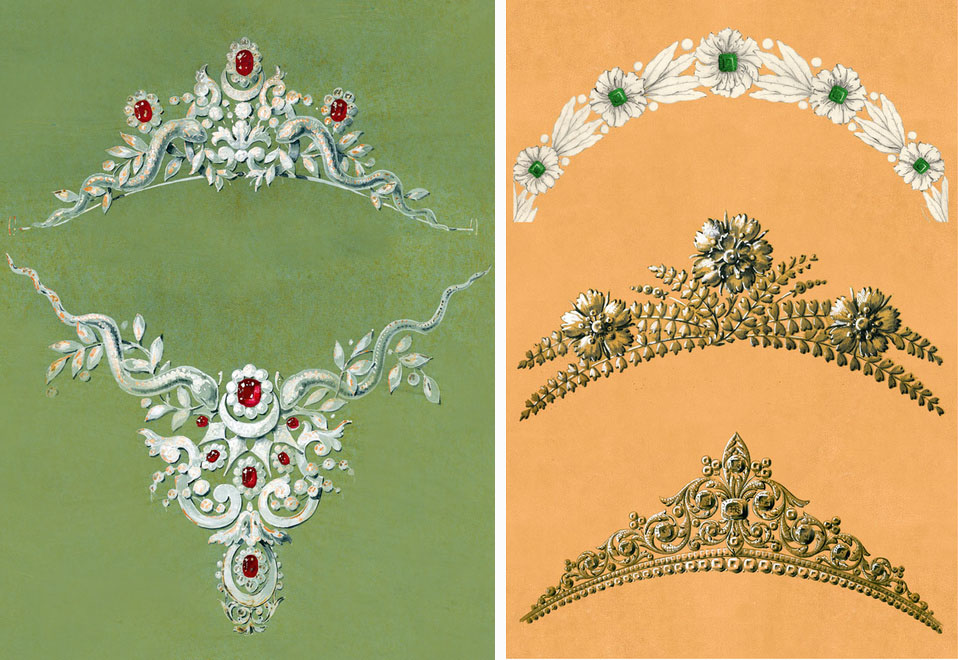
Ellebasi composed the pieces as a young adult, between 1892 and 1896, some of them while living in Cannes. We can only guess if she lived there permanently or if it was her winter place of residence. Apart from the music for Les Courtisans de Flore we haven’t found any of Ellebasi’s compositions in print. In fact, Les Courtisans de Flore probably got printed because lyricist Alfred Gounin-Ghidone himself was a publisher.
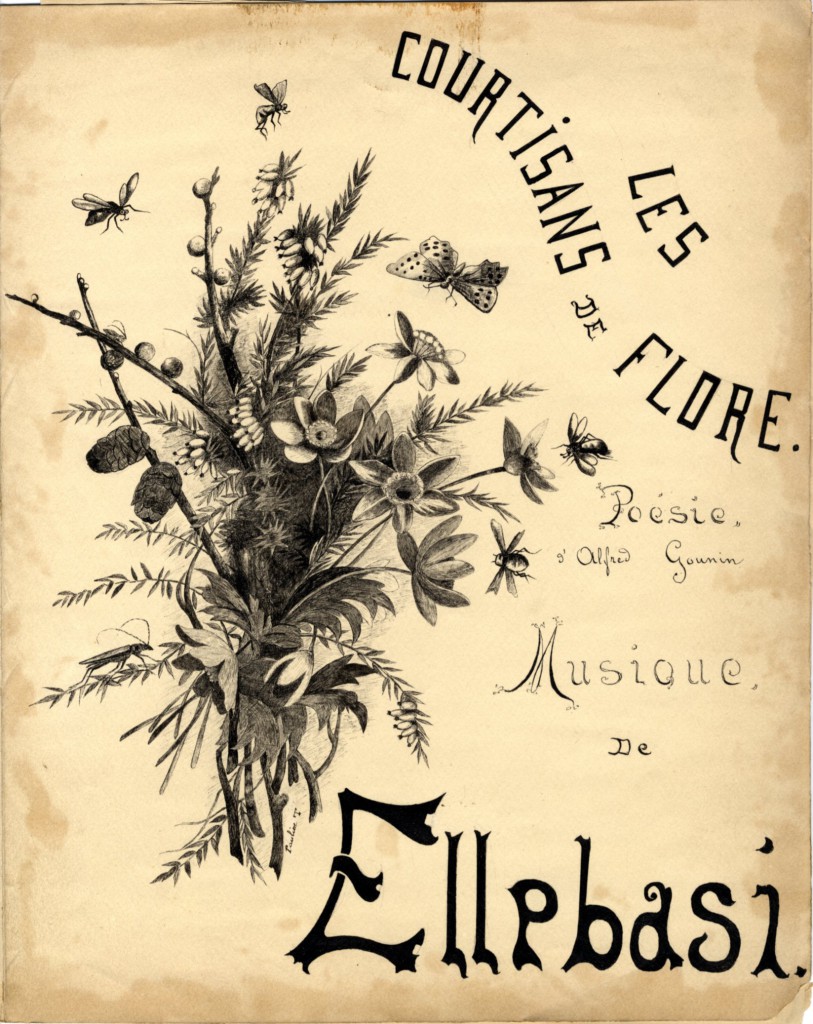
And now for the scandal. The son of Isabelle’s great-uncle, Antonio Mellerio, was a misfit. Already at the age of seventeen he plunged into the mid-19th century Parisian society, neglecting his work for gambling and orgies. He was a big spender, misbehaved scandalously and had countless mistresses until at the age of 25 he ‘fell prey’ to Anna de Beaupré. Her name, suggesting an aristocratic background, was an embellishment invented by Anna Trayer. She was the separated wife of a tailor Achille Debacker. Antonio, no doubt madly in love, paid Anna’s old debts and treated her lavishly. His parents disapproved when they moved in together. After the dead of his father in 1860 Antonio left the running of the jewellery store to his cousins, restored his father’s Tailleville castle near Caen in Normandy and the couple changed house.
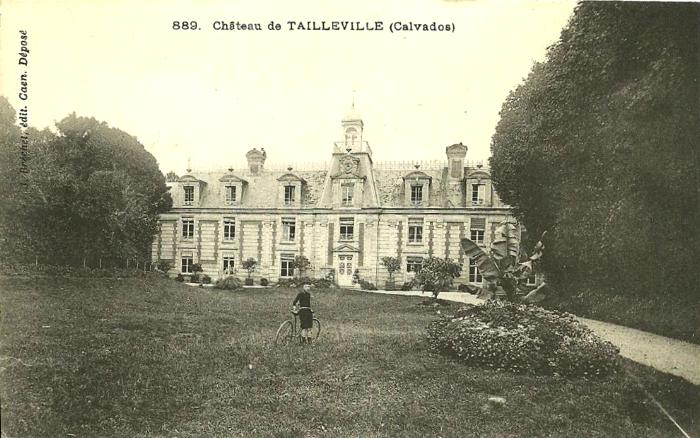
When his mother died in 1868, Antonio was eaten alive by guilt for all the pains he had caused her. At the funeral he literally plunged into her grave. Later he acted more and more strangely, often seeming incoherent to his family. Nonetheless the family convinced him to sell his inherited share of the jewellery business to Isabelle’s uncle Joseph Mellerio. Antonio was also persuaded to make a will in favour of his cousins. Isabelle’s father was named executor. Furthermore Antonio promised to finish his relation with Mme Debacker and he burned her letters in the fireplace. And in an effort to redeem himself he mutilated both his hands by keeping them in the fire chanting ‘Burn! Burn! Burn! Purify my past!’ He lost all his fingers and parts of his hands. Later he would learn to write and also draw with his stumps and even, with great perseverance, with his mouth.
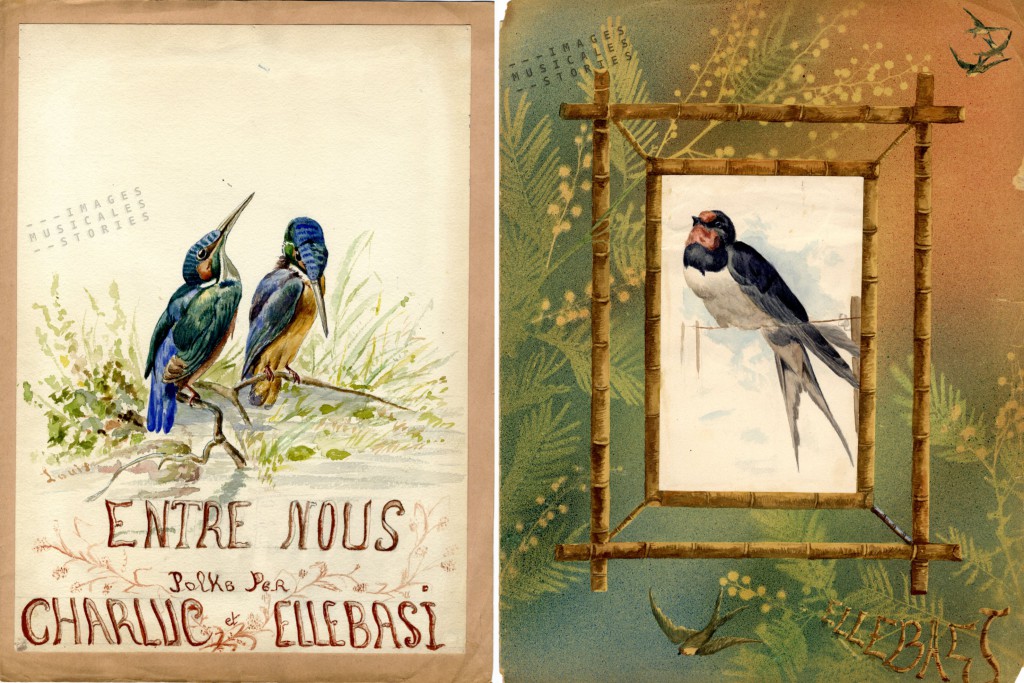
But Antonio reconciled with Mme Debacker and became, according to his family, religiously obsessed, seeing angels and devils. Alas, he didn’t profit long from his immense inherited fortune. One day in 1870, he was then 43 years old, he climbed the stairs of his castle and fell (or threw himself) from the top of its belvedere dying instantly. Isabelle’s father who had never visited his cousin before, rushed to Tailleville with the intention of executing Antonio’s will, only to be told that a new will had been found!
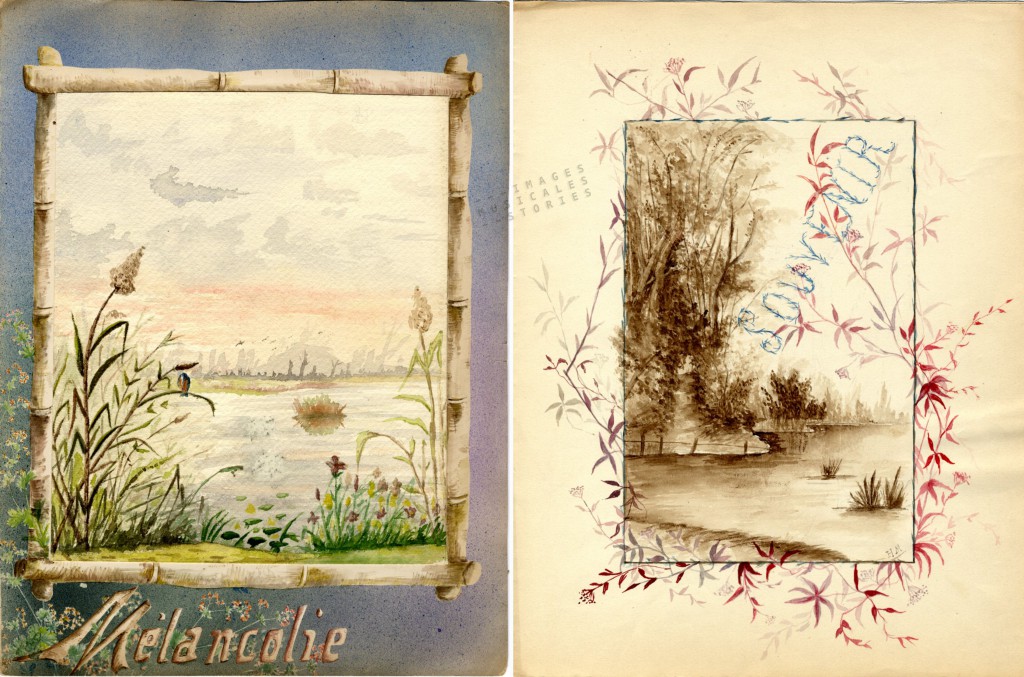
In that new will Antonio had left his complete fortune to Mme Debacker. Moreover he had indicated that after her dead, Tailleville castle and some money should go to a local convent. The family was horrified. Ten of his cousins, including Isabelle’s father, contested this last will on two grounds: Antonio was too unsound of mind to make a valid testament and the beneficiaries had exerted undue influence over Antonio, coercing him into making a testament in their favour. In addition they wanted an annulment of all his previous substantial gifts to Mme Debacker. The trial was a cause célèbre. It scandalized Paris, gossip swirled around and it provided ample material for legal journals. In the end –meanwhile the 1870 franco prussian war had ended– the cousins lost the trial and all the subsequent appeals. Mme Debacker was finally allowed to take possession of her inheritance.
In 1873 this sordid story was made into a poem Red Cotton Night-Cap Country by Robert Browning, the famous English Victorian poet. He had researched the facts reading newspaper reports and transcripts of the legal documents and interviewing residents of Tailleville.

The family Mellerio dits Meller still have their boutique in Paris, 9 rue de la Paix, right next to Cartier. Mellerio dits Meller is the world’s oldest jeweller existing just over 400 years. Today they are the last important jeweller company to be independent and family owned.

Next time we visit the Place Vendôme in Paris we’ll try to exchange these unique sheet music covers for a tiara. Wouldn’t that be nice!

Yours truly, Enivid
Further reading:
- Rough in Brutal Print: The Legal Sources of Browning’s Red Cotton Night-Cap Country by Mark Siegrist.
- Mellerio dit Meller, joaillier des reines by Vincent Meylan

